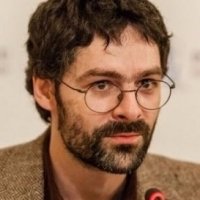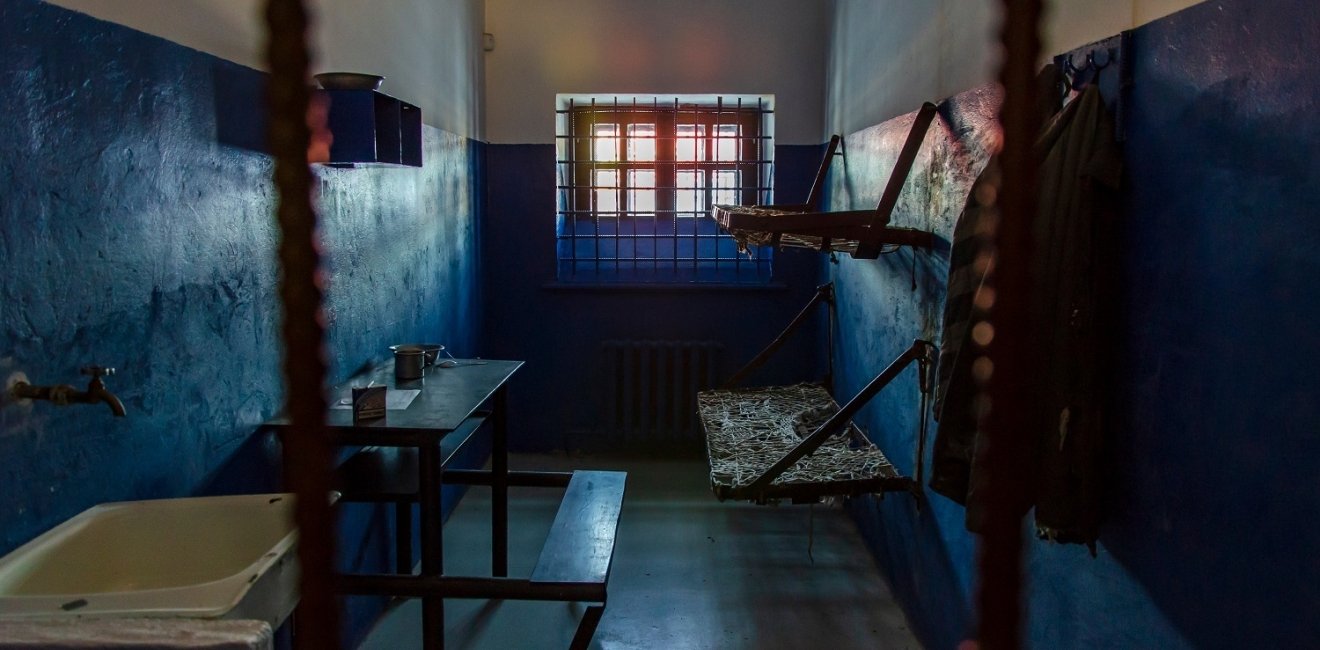
A blog of the Kennan Institute
BY NIKOLAY EPPLEE
Russia’s recently held Day of Remembrance, commemorating victims of state terror, once again served as a reminder of how little progress has been made in reckoning with Russia’s traumatic twentieth century. The Russian courts have rehabilitated most of the victims, and the authorities have supported such commemoration practices as erecting monuments and instituting memorial days, but the subject remains underdiscussed and unresolved on multiple levels.
Two recent postings on social media cut to the heart of the matter (Facebook is routinely used as an opinion platform in Russia for want of media that are readily open to controversial views):
“Stalin did not shoot people up with his own hand. The mass terror’s most active figures were the perpetrators.... None of the killings would have happened without them. The tyrant would have remained a deeply uninteresting nutcase if his hangmen did not agree to put his sick fantasies into reality. . . . There are neither tyrants nor Absolute Evil but consequences of both made real by the perpetrators who hide behind the tyrant’s name,” the political scientist and commentator Kirill Rogov wrote on his Facebook page.
“People were not just ‘shot’ or ‘exiled.’ From the Communist state’s early beginnings in 1917, the Bolshevik party gave the Cheka [the Russian abbreviation that was the secret police’s first moniker, of which it later had many, including NKVD and KGB] the license to kill without trial and terrorize everyone whom its agents suspected of ‘espionage and counter-revolution.’ The Cheka was instituted this way not because the party that created it was strong, but because the ruling party was weak and was not really ruling in the post-revolutionary chaos. The murderous ‘Red Terror,’ the lists of ‘enemies of the people’ and other intimidation techniques were designed to establish that rule, not the other way around. The Cheka’s organizational culture is still alive today: it sees itself as a curator of the state, purports to oversee the state’s decisions and considers itself entitled to punish its ‘enemies,’” the journalist Maxim Trudolyubov said in a Facebook post.
These are two characteristically opposing views of the nature of dictatorship and state terror. One is behavioral (or moralistic), the other institutional.
Commentators seem to resort to the first one when no institutions capable of reckoning with past crimes are in place. The organizers and perpetrators of the Soviet state’s terror campaigns were never put on trial. Legal mechanisms that might prevent the Russian state’s potential arbitrary rule are missing. One way of reacting to that lacuna is indeed to lament the human condition and debate the origins of evil.
The other approach is to focus on the institutional foundations of criminal practices and on creating institutional barriers to prevent those crimes from happening again. This second approach is not perfect. It raises a lot of questions.
Many refer to the Nuremberg trials as the centerpiece of the so-called “German model” of dealing with the past. But those trials convicted only 5,000 people, while many criminals evaded responsibility by agreeing to cooperate with the victorious powers. The most high-profile cases included that of General Heinz Guderian, who worked with the US, and that of Field Marshal Friedrich Paulus, who cooperated with the USSR.
The story of the former German Democratic Republic is instructive too. After the unification of Germany, almost 100,000 people were charged with various crimes committed under the SED (the Socialist Unity Party of Germany, the GDR’s ruling party) dictatorship. Only 1,400 defendants stood trial, and only 756 (or 0.7 percent) were convicted. In 92 percent of cases they were sentenced to fines or suspended sentences. Those convicted were mostly border guards who shot at people trying to scale the Berlin Wall and escape to the West. Some high-ranking officials and special agents were convicted too, but most just carried on.
Whereas the legal approach has many flaws, the moralistic one has no legal dimension. Calls for a need to “reeducate society” may sound interesting, but they are bound to remain mere rhetorical tools. A change in mass behavior may occur, but only within a broader institutional transformation leading to economic prosperity and social well-being. Past experiences with post-totalitarian societies attest to that.
The moralistic and the institutional approaches sometimes collide. The story of the modern usage of the word “executioners” (palachi) to describe the Stalinist terror perpetrators is a case in point. “Executioners” are a fixture in many online discussions about the Stalinist legacy. In Russia, it has long been a cliché to say that as a result of not having gone through a Nuremberg process of its own, the country has “the descendants or heirs of the executioners” orchestrating its politics of memory. And they rule the country too, people keep saying.
And yet the word “executioners” is tricky. It came into wide use during the Thaw, the period between the mid-1950s and the early 1960s when the Soviet leader Nikita Khrushchev was trying to distance himself politically from his predecessor, Joseph Stalin. Khrushchev did denounce some of the crimes of the previous rule, but the state remained a dictatorship. Although some of the innocent victims were rehabilitated, Khrushchev’s “de-Stalinization” barely touched the perpetrators, most of whom kept their cushy jobs. The Soviet dissident poet and songwriter Alexander Galich captured the moral sentiment of the time in his 1963 song, “The Prospectors’ Little Waltz”:
Let others cry out from despair,
From insult, from hunger and cold!
In silence we know there's more profit.
And the reason is—silence is gold.
That's how you get to be wealthy,
That's how you get to be first,
That's how you get to be hangmen!
Just keep mum, keep mum, keep mum.
Since the time of the Thaw, the conversation about Russia’s past has not moved onto the legal plane, remaining a debate over what is moral and what isn’t. The word “hangmen” has emotional and dark poetic overtones, not the legal implications of the word “perpetrators.”
It is the lack of clear legal definitions and post-totalitarian institutional arrangements that has kept the conflict simmering for decades. On the one hand, this legal uncertainty allows us to speak of impunity for the perpetrators. On the other, the lack of actual sentences makes it possible to spread the moniker of “executioners” over an indefinite number of people who used to work for the Soviet secret police, security agencies, or the top party organs.
It is important to understand that those who call for identification of the state terror perpetrators are not out to unleash a vendetta but to make sure a vendetta does not happen. This can only be achieved by establishing the exact nature of the people’s involvement in past crimes. A typist who typed the lists of those condemned to death, the prison truck’s driver, the executioner who did the shooting, the judge or troika member who pronounced the sentences, the party bosses who oversaw the practice—these people should all be treated differently, not wholesale as hangmen. The memory of a typist or a driver suffers from the legal uncertainty no less than the memory of the terror’s victims.
Decrying the hangmen and those who “kept mum” may bring some moral feel-good but will only deepen the dormant civil conflict between the descendants of victims and the descendants of perpetrators. Only an institutional solution with legal ramifications can put Russian society on a path to ending its decades-long silent but bitter divisions.
The opinions expressed in this article are those solely of the author and do not reflect the views of the Kennan Institute.
Author


Kennan Institute
After more than 50 years as a vital part of the Wilson Center legacy, the Kennan Institute has become an independent think tank. You can find the current website for the Kennan Institute at kennaninstitute.org. Please look for future announcements about partnership activities between the Wilson Center and the Kennan Institute at Wilson Center Press Room. The Kennan Institute is the premier US center for advanced research on Eurasia and the oldest and largest regional program at the Woodrow Wilson International Center for Scholars. The Kennan Institute is committed to improving American understanding of Russia, Ukraine, Central Asia, the South Caucasus, and the surrounding region through research and exchange. Read more

Explore More in The Russia File
Browse The Russia File
Chechnya as a Model of Modern Russia

Russia’s Indigenous Communities and the War in Ukraine

Gas and Power in a Changing US–Russia Relationship

